This was published 9 years ago
Franklin ship found: Last great maritime mystery solved
By David McGonigal
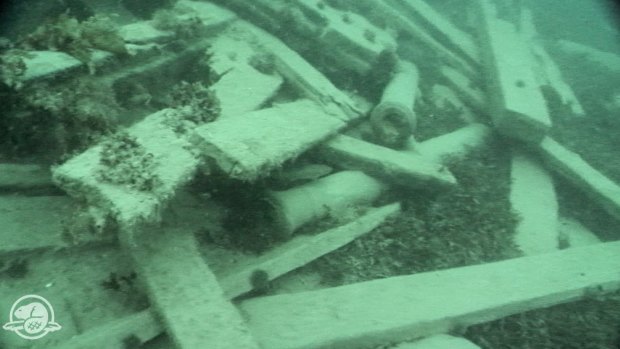
The deck of the Franklin ship. Credit: Parks Canada
It's not often that tourists are offered the chance to be part of history, but that happened in Canada this month.
On September 9 it was announced that a Canadian expedition in the Arctic had found one of the two sunken ships of the Franklin expedition, missing since 1845. It was the end of the world's most enduring maritime mystery and there were tourists there who'd paid to be with the scientists and sailors on one of the search vessels.
On the eve of the search, John Geiger, CEO of the Royal Canadian Geographical Society (RCGS), told Traveller.com.au that "Finding either ship would be a momentous discovery as these are the two most important unlocated wrecks in the world".
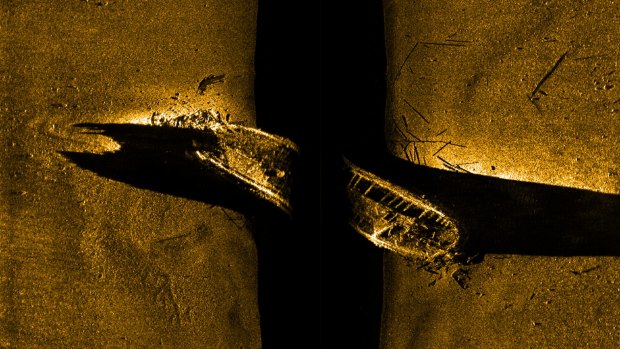
Sonar: The first view of one of the Franklin Expedition ships since 1845. Credit: Parks Canada
"More importantly, humans don't like mystery and the wrecks may provide clues to finally solve what happened on the Franklin expedition."
There's a strong Australian connection, too. Sir John Franklin was governor of Van Diemen's Land, now Tasmania, from 1837 to 1843. Tasmania's Franklin River and village of Franklin plus Hobart's Franklin Square are reminders of his time in Australia.
After he was recalled to London he was sent on the best-equipped Arctic expedition ever to find a way through the Northwest Passage. The two strong ships with 134 men sailed in 1845 and were never seen again.
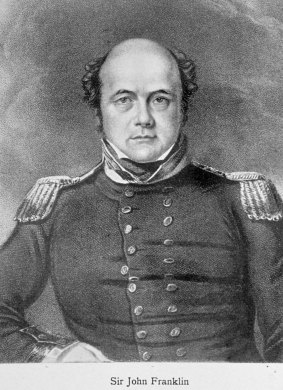
Sir John Franklin.
The Northwest Passage quest was as important in its time as the more-recent moon and Mars space programs, but with greater practical possibilities. Even a cursory look at a globe reveals that Canada's north is a maze of islands and waterways.
But a passage through would be a shortcut between Europe and China - 14,000 kilometres compared with 24,000 kilometres through the Panama Canal (opened in 1914) or more than 30,000 kilometres around Cape Horn.
The quest began in the 16th century and ended in 1906 when the Roald Amundsen-led "Gjoa" expedition completed the passage but showed that ice made the route impractical.
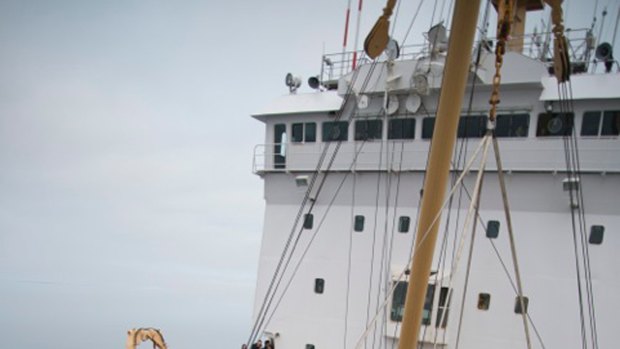
Vavilov to Coast Guard - Andrew Prossin, MD of One Ocean Expeditions supervises the transfer of search boats from the One Ocean Voyager to a Canadian Coast Guard ship.Credit: Colin Bates
The initial 19th century search for the Franklin expedition endured for more than a decade and was promoted by Franklin's wife, the remarkable Lady Jane. The searchers charted much of northern Canada.
Some artefacts and graves were found but never the ships - the Terror and Erebus. These same ships gave their names to the volcanoes on Antarctica's Ross Island when they were used on James Clark Ross' earlier expedition that coincidentally travelled south via Hobart while Franklin was governor.
Divers returned to the wreck this week, so confirmation of whether the ship is the Terror or Erebus it is expected soon.
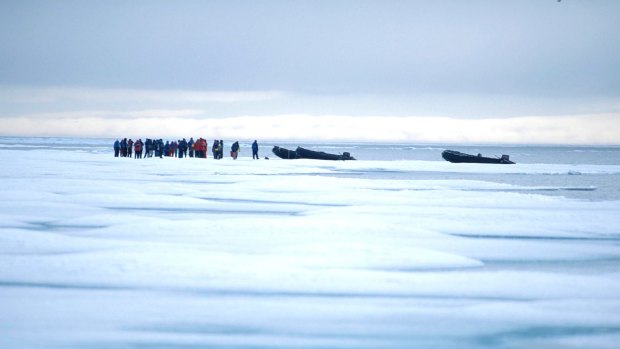
Icewalk: Walking on Arctic sea ice is a unique summer experience that is only occasionally possible.Credit: David McGonigal
Since 2008, the Canadian government has been conducting summer searches for the Franklin wrecks, surveying more than 1200 square kilometres.
Prior to departure of this year's Parks Canada-led expedition to Victoria Strait, Geiger said: "Arctic wrecks don't deteriorate much, but if the ships sank in the shallows they may have been scoured to pieces by the ice flowing through Victoria Strait."
Fortunately, that hadn't happened. The sunken ship was found at a depth of only 11 metres, standing upright on the seabed, mainly intact except missing her three masts that were probably scoured off by drifting ice.
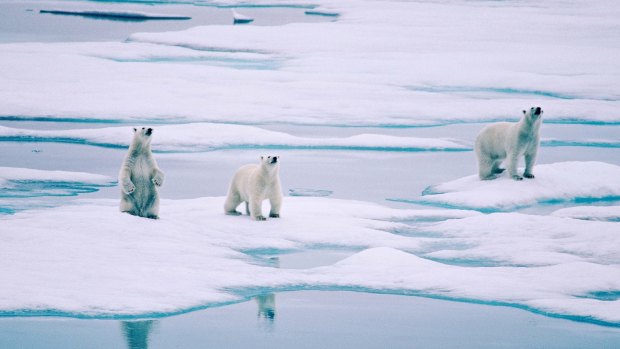
There are bears out there: Polar bears are a common sight.Credit: David McGonigal
Perversely, this year there was more ice in the Canadian Arctic than there has been for several years. That resulted in effectively two distinct searches separated by heavy ice. While the north was regarded as the most likely site, the ship was found in the south.
The exact location is a closely guarded secret that extends to radio silence and vagueness about the time of discovery. Canada could only tell the world after the Queen had been informed that one of her ships had been found.
Aaron Lawton, the expedition leader on the One Ocean Voyager (aka Akademik Sergey Vavilov) said his voyage with archeologists and tourists got off to a good start when, the day after leaving Resolute Bay, there were 15 polar bears around the ship.
"The predominant feeling overall was one of affinity with Franklin and his men and their battle with the ice. Only ice-strengthening allowed our ship to make any progress at all. Of course, being part of the closing chapter of a great Arctic saga was a wonderful experience for all," he reported.
The One Ocean Expeditions' vessel was vital in transporting all the underwater survey units - as well as being the on-site operational base for the Arctic Explorer, a Canadian defence-developed autonomous underwater vehicle (AUV) that produces high-resolution images of the ocean floor of unprecedented quality.
Once the AUV was launched each day there was time for the passengers to take to the Zodiacs and explore the area. Besides more bear sightings (and myriad birds and seals) there were even landings on the sea ice. It's a rare summer experience when the frozen sea surface remains thick enough to walk on.
One Ocean Expedition's Akademik Sergey Vavilov is well known to many Australians - she has taken tourists to the polar regions for 15 years. Indeed, in 2005 she was the vessel that was cheekily claimed to have completed the first successful Australian transit of the Northwest Passage, more than 150 years after Franklin's attempt.
The ship departed Resolute Bay on August 26 with scientists, sponsors, donors, dignitaries and passengers on board, aiming for the survey zone in Victoria Strait. While the ship negotiated the ice, there was an intensive educational program utilising the remarkable expertise on-board, including John Geiger and other historians and marine archeologists.
That's a distinctly different itinerary to a regular voyage through the Northwest Passage that might travel from western Greenland to Cambridge Bay, Canada over 12 days. That would include the scenic beauty of Greenland and the wildlife and Inuit culture of Canada. Part of the quest is to see a majestic 600 kilogram polar bear in the wild, a wallow of walruses on the beach, or foxes, caribou or tiny lemmings.
The Canadian Arctic is a birding bonanza with cliffs packed with guillemots, dovekies, thick-billed murres and Atlantic puffins. The apparently stark and barren, treeless landscape has a carpet of tiny flowers best captured if you set your camera to macro.
If you'd like to be part of history too, next year it's likely that the search will resume for the other Franklin ship and that One Ocean Expeditions will participate again. As a guide, the cost of the 15-day voyage this year was from $US12,000 ($13,300) to $US26,000 per person.
Whether it's discovering what really happened to the Franklin Expedition or completing your own transit of the Northwest Passage, the Canadian Arctic is an alien place where each day feels like a true exploration.
David McGonigal has worked as an expedition leader in the Arctic, including with One Ocean Expedition.
MORE INFORMATION
Bookings: oneoceanexpeditions.com. Phone (in Australia): 1300 368 123
Royal Canadian Geographic Society: rcgs.org
Parks Canada: www.pc.gc.ca/eng/index.aspx
Sign up for the Traveller Deals newsletter
Get exclusive travel deals delivered straight to your inbox. Sign up now.